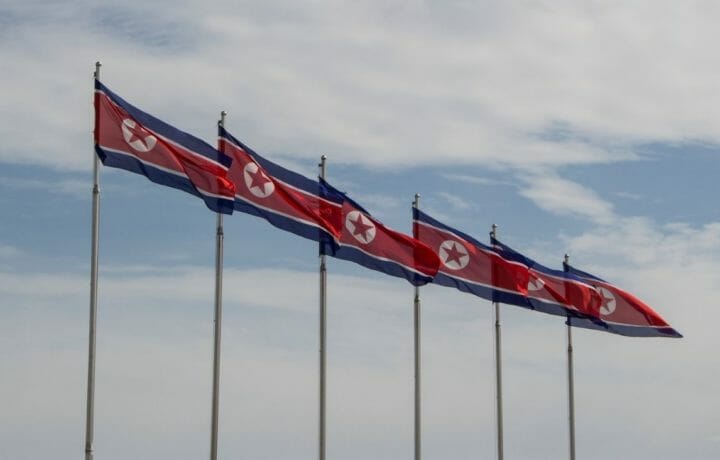While the Ukraine War monopolized the headlines, politics, and assistance efforts from the U.S. and West during much of 2022, the Korean peninsula appeared to take back seat. However, nothing could be farther from the truth. Even though North Korean leader Kim Jong Un was not making daily front page news, he attempted to keep the focus on him, rather than Ukraine. Regardless, his actions remained a major focus for the DoD.
The rogue nation launched missiles every month except July. Some launches were tests, but many were politically motivated, even flying over Japan. By mid-year, North Korea had launched over 25 land-based and submarine-based missiles.
U.S. and North Korea Go Back and Forth
In response to the unprecedented activity, in September the USS Ronald Reagan aircraft carrier visited South Korea for joint drills. Paying its first call in four years, the presence of the carrier was a show of force and the U.S. ability to deploy nuclear-capable “strategic assets” to deter North Korea.
In a tit-for-tat response, North Korean leader Kim Jong Un launched numerous missiles while announcing the military will “automatically” execute nuclear strikes against enemy forces if leadership comes under attack. A few weeks later, North Korea launched a missile that flew over and past Japan, prompting Japanese prime minister Fumio Kishida to warn citizen to take shelter.
In November, North Korea launched four short-range ballistic missiles into the sea, in response to the U.S. sending two supersonic bombers over South Korea. A week later, Pyongyang fired an ICBM with perceived ability to travel 9,000 miles or longer, putting the U.S. mainland within its range.
In mid-December, U.S. forces launched a space unit in South Korea amid North’s growing threats. This implementation has come after U.S. officials expressed concerns over increased space security challenges, including development of hypersonic weapons by China and the testing of Russian anti-satellite technology last year.
Nukes and Drones Bring Anxiety
South Koreans have remained steadfast during previous Pyongyang nuclear weapons test, growing accustomed to North Korean saber rattling. Most of Kim Jong Un’s frequent military provocations are perceived as attempts to garner attention. However, nerves of many South Koreans were rattled during the Christmas Holidays by North Korean non-nuclear drones. Five drones flew through South Korean airspace for almost five hours, with one reaching the northern Seoul. In response, the South scrambled fighter jets and modern attack helicopters.
On New Year’s Day, state media reported Kim Jong Un ordered an “exponential” expansion of North Korea’s nuclear arsenal, with development of more powerful intercontinental ballistic missiles. The speech occurred concurrently with another weapons launch. Kim has promised to boost both quality and quantity of his nuclear arsenal to cope with “U.S. hostility.”
Many analysts think 2022 has been a major shift in the wrong direction for geopolitical stability, including the Korean peninsula. With the war in Ukraine capturing much of the world’s attention and U.S.-China rivalry intensifying, North Korea has taken the opportunity to align itself more closely with old allies in Beijing and Moscow during the past 12 months.
With the stakes never higher, many believe it is time for North and South Korea to initiate peaceful dialogue after a year of significant escalations. Others think Kim’s production of more capable weaponry is signaling his desire to enhance his future negotiating power and garner greater outside concessions.
Tensions with North Korea Rising for U.S.
After an intense year of brinkmanship on the Korean Peninsula, there appears to be no simple solutions. During President Joe Biden’s first face-to-face meeting with Chinese President Xi Jinping in November, the President made it clear to Xi that North Korea’s launching of “long-range nuclear tests” was unacceptable. President Biden stated that if Pyongyang ignored Xi, the U.S. would take certain “defensive” actions to “send a clear message to North Korea.”
With North Korea launching over a hundred ballistic and cruise missiles this year, Seoul and Washington are increasing security cooperation for North Korean deterrence. Kim Jong Un’s passion for missile tests has intentionally decreased stability, while increasing tension between its neighbors and the rest of the world.



